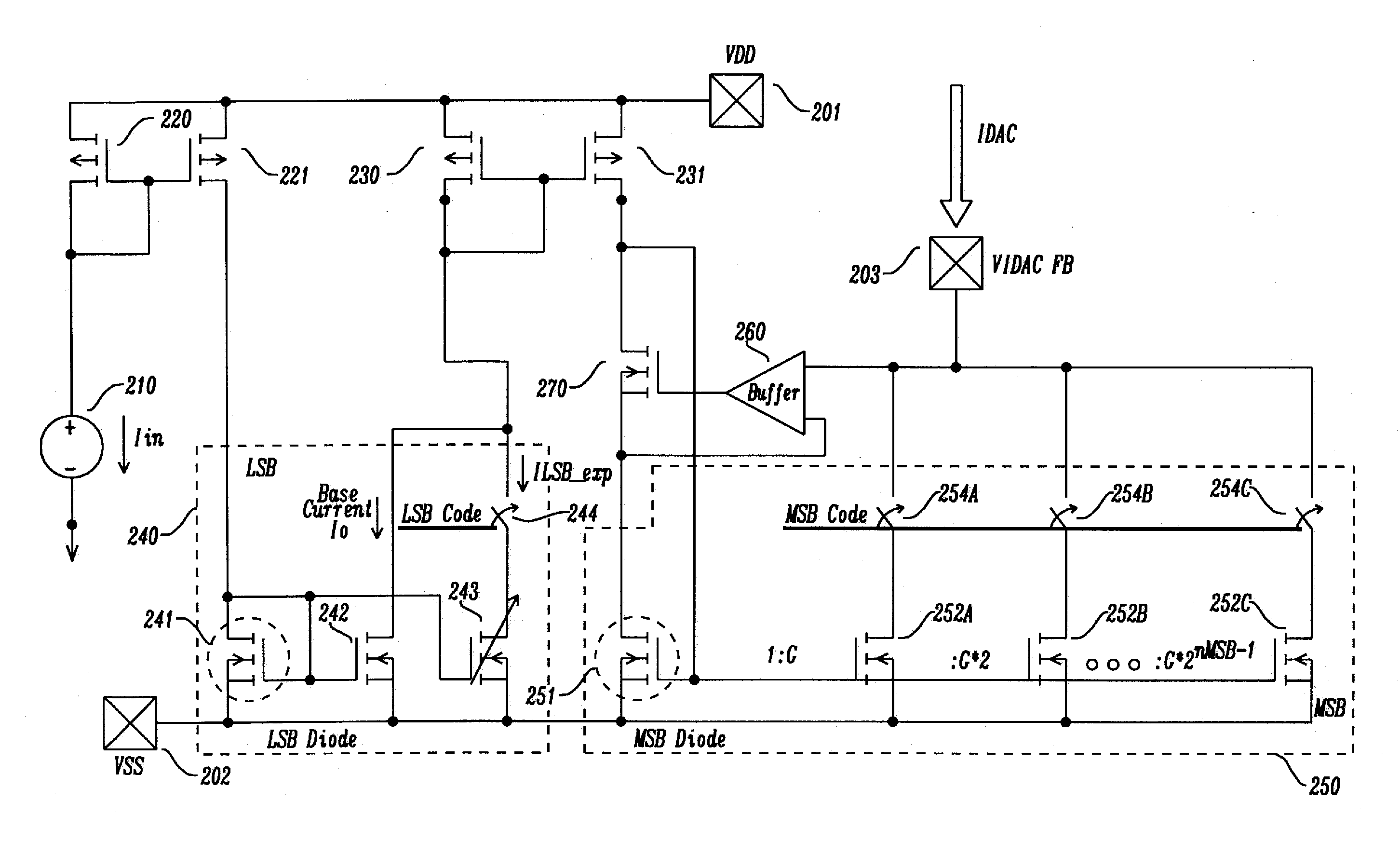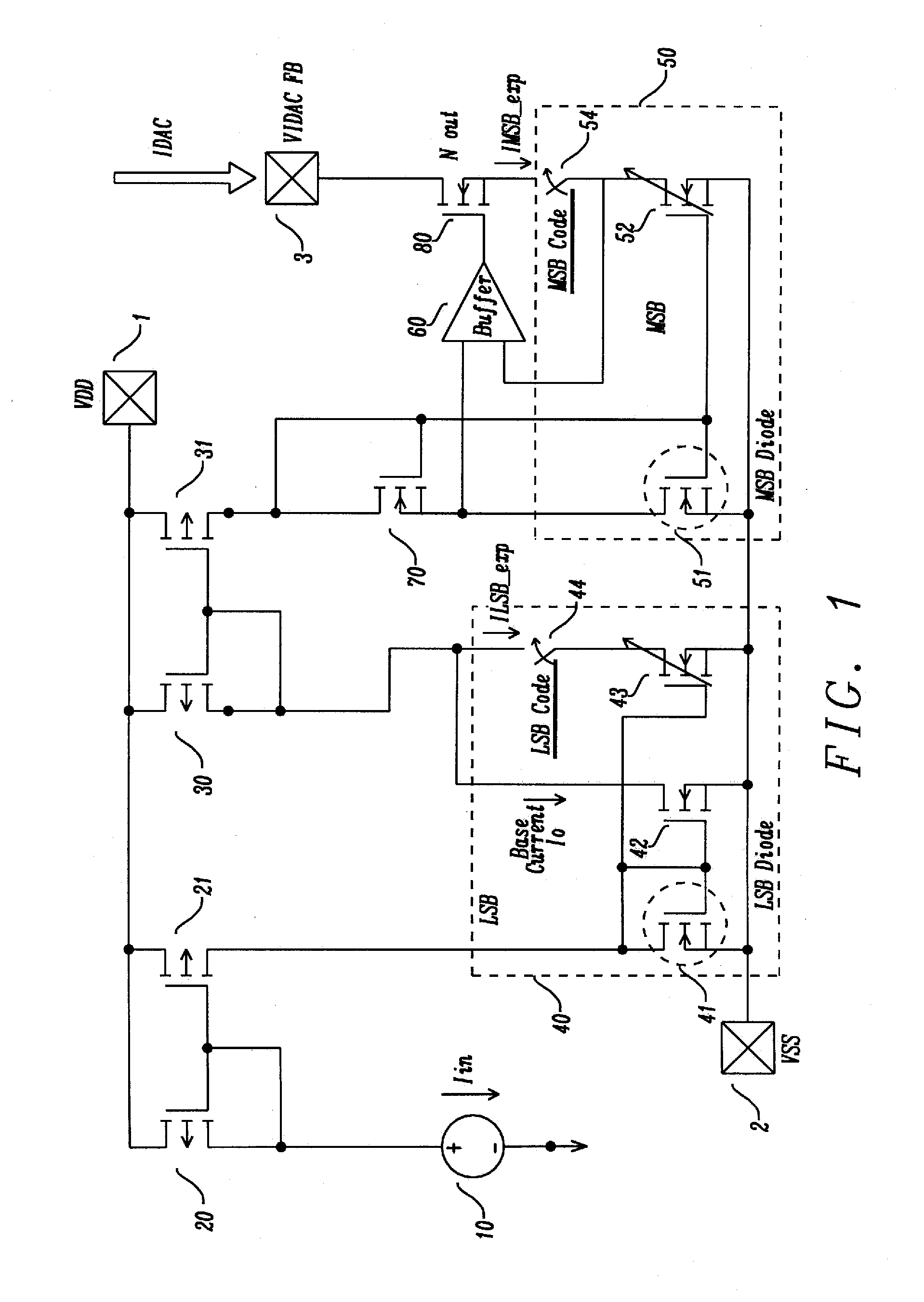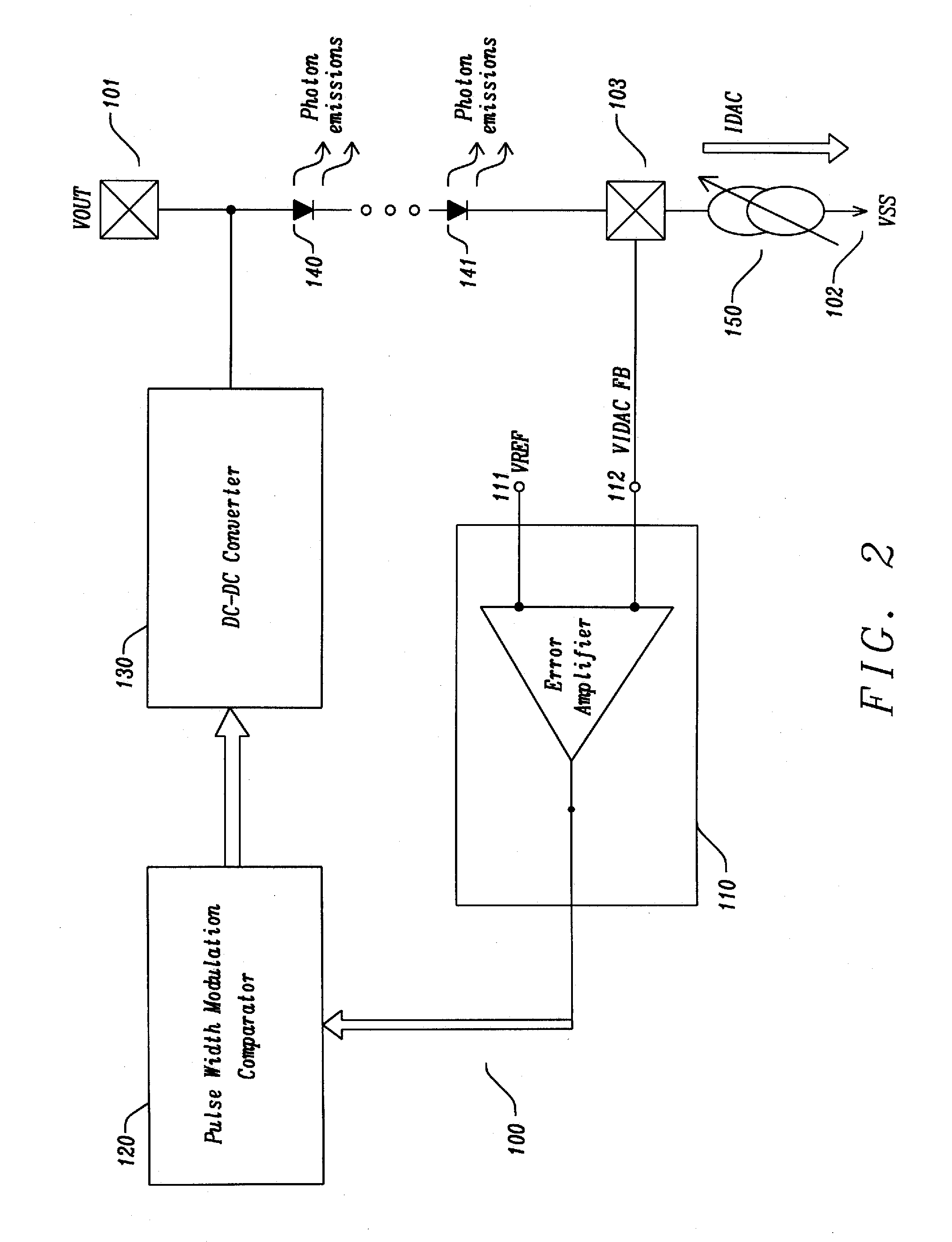Method for Improving the Accuracy of an Exponential Current Digital-to-Analog (IDAC) Using a Binary-Weighted MSB
a digital-to-analog converter and exponential current technology, applied in digital-to-analog converters, instruments, transmission systems, etc., can solve the problems of difficult defining of msb, difficult implementation of equations, and inability to achieve linear dimming process, so as to minimize architectural complexity and mismatch variations
- Summary
- Abstract
- Description
- Claims
- Application Information
AI Technical Summary
Benefits of technology
Problems solved by technology
Method used
Image
Examples
Embodiment Construction
[0028]FIG. 1 is a circuit schematic diagram illustrating a prior art embodiment of an IDAC architecture in accordance with a prior art embodiment. In the implementation of FIG. 1, there is a LSB network that separates the LSB base current To and the exponential part ILSB_exp. In the implementation of FIG. 1, there is a MSB network that separates the MSB base current Io and the exponential part IMSB_exp. FIG.1 shows a power pad VDD 1, a ground rail VSS 2, a VIDAC_FB pad 3, a first PFET current mirror (20 and 21), a second PFET current mirror (30 and 31), a LSB network 40, and a MSB network 50, a buffer element 60, a transistor 70, and output transistor 80. The LSB network 40 contains a LSB diode 41, a transistor 42 for the base current Io, a variable transistor 43 for the exponent term ILSB_exp, and a LSB responsive switch 44. The MSB network 50 contains a MSB diode 51, a variable transistor 52 for the exponent term ILSB_exp, and a MSB responsive switch 54.
[0029]FIG. 2 is a circuit s...
PUM
 Login to View More
Login to View More Abstract
Description
Claims
Application Information
 Login to View More
Login to View More - R&D
- Intellectual Property
- Life Sciences
- Materials
- Tech Scout
- Unparalleled Data Quality
- Higher Quality Content
- 60% Fewer Hallucinations
Browse by: Latest US Patents, China's latest patents, Technical Efficacy Thesaurus, Application Domain, Technology Topic, Popular Technical Reports.
© 2025 PatSnap. All rights reserved.Legal|Privacy policy|Modern Slavery Act Transparency Statement|Sitemap|About US| Contact US: help@patsnap.com



